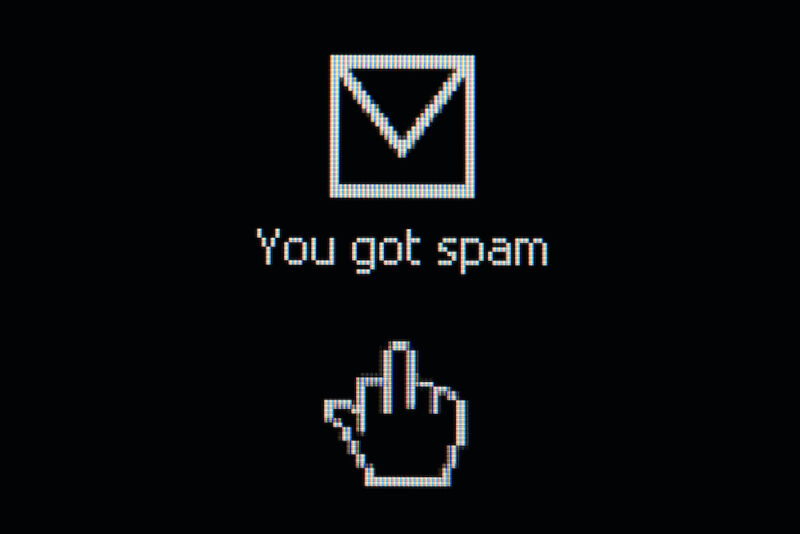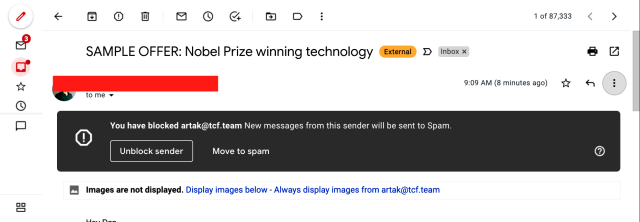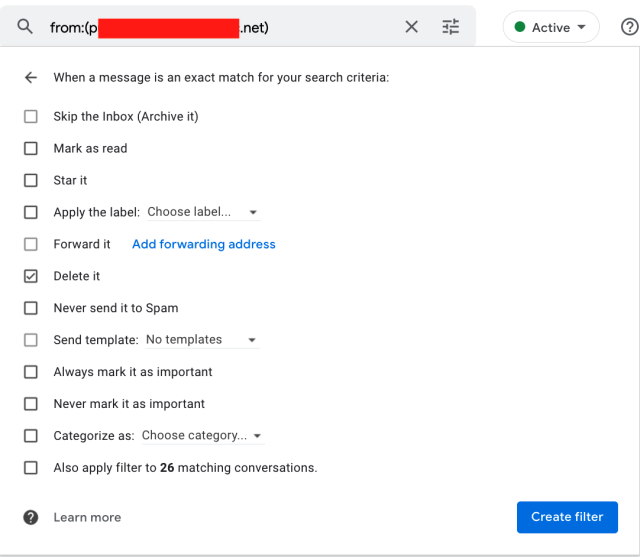
A few months ago, my G Suite-enabled Gmail account reached a grim milestone: with no warning, the “block [email address]” feature—available from the menu with the three vertical dots in the upper left of the Gmail screen—stopped working because I had maxed out the total number of addresses Google allows to be blocked.
For years, I’ve used the feature liberally to block emails from PR people who send off-topic pitches or scammers who try to phish my passwords or infect my devices. With a single click, any future emails sent by those nuisance addresses automatically landed in my spam folder.
Blocked but not blocked
At some point, the block address feature stopped working. When I use the feature now to block an address, I see a message telling me that all future emails from the address will go to my spam folder. Which is exactly what I want. But that’s not what happens. Emails from those addresses continue to go right into my inbox.
Google provides no easy way to know about this. Here’s what I see immediately after I try to block an address:

And yet, I continue to receive emails from the same address. And when I open the email, sure enough, it’s clear the address is NOT blocked.

I asked Google PR about this and got a response that Gmail accounts are limited to just 1,000 blocked addresses. A spokesperson said Google is considering raising the limit, but if it does, it will “take some time” for it to happen.
This is a MAJOR step back. I get so much junk mail (mostly from PR people who either don’t know or don’t care what my beat is) that the block feature has been crucial to my productivity. Gmail was the first to pioneer an email service with data storage caps measured in the gigabytes. Early on, it provided powerful tools for sorting and searching messages. It integrated the calendar. And yet, despite all this ingenuity, Gmail limits blocked addresses to a paltry 1,000? What the hell?
Since then, I’ve used Gmail filter rules to free my inbox of junk, but that’s hardly satisfactory. Creating filter rules on an address-by-address basis requires considerably more clicks than using the block feature. And even then, Gmail filters have no way to send messages to spam. I’m also guessing Gmail may limit the number of filter rules as well.
An imperfect workaround
Google Project Zero researcher Tavis Ormandy, acting solely on his own behalf and not for his employer, has offered one workaround. It’s not very user-friendly, and I’m still not sure if it fully works for me, but it seems promising. The idea is to copy all 1,000 email addresses I have blocked and paste them into a filter rule that deletes all messages from those senders.
Hmm, this is the best I can come up with (F12 on the Blocked List, then paste this into the Console) Array.from(document.querySelectorAll(“tr.r7[role=listitem]”)).map(a => a.innerText.match(/<(.*)>\tunblock/)?.[1]).filter(a => a).join(‘ OR ‘) pic.twitter.com/DelonoKMC1
— Tavis Ormandy (@taviso) November 19, 2021
What this means is that he created a script and ran it inside his browser console as he was viewing his blocklist in the Gmail settings menu. To find the blocklist, click the three vertical dots in the main Gmail window, choose “manage inbox settings,” and select the “filters and blocked addresses” tab. Then, hit the F12 key on a computer keyboard, choose the console tab, and paste the script.
Ormandy’s script looks like this:
Array.from(document.querySelectorAll("tr.r7[role=listitem]")).map(a => a.innerText.match(/<(.*)>\tunblock/)?.[1]).filter(a => a).join(' OR ')
The console then returns a list of all the email addresses in the blocklist, with each one separated by a boolean OR. Then copy the list, go back to the Gmail “filters and blocked addresses” tab, and click “create new filter.” Paste the addresses into the “From” field, click “continue,” tick the “Delete it” box, and click the “create filter” at the bottom.

In theory, this single rule should block all emails sent from these addresses, and that should allow me to delete the 1,000 blocked addresses so I can once again add fresh addresses to the blocklist. In practice, Gmail tends to choke when fed all 1,000 addresses at once.
When I broke up the list into smaller chunks, I got inconsistent results. Some emails were deleted and others weren’t. I wasn’t able to find a pattern for those that worked or didn’t work. Besides choking on large lists of addresses, another problem is that in my tests, new filters can take as long as an hour to begin working, but I don’t think that’s the only reason for the difficulty.
The bigger point is that Gmail users shouldn’t have to jump through hoops like these to keep their inboxes free of spam and malicious emails. There’s no limit to the badness the Internet can dish out, so there shouldn’t be a limit on remedies for this badness, either. Gmail, please throw me a life raft soon. Without the block capability, I’m drowning.
